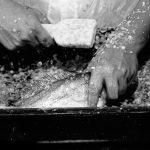How to Draw a Face: A Comprehensive Guide for Artists
Drawing a realistic and well-proportioned face is a fundamental skill for any artist, whether you’re working with traditional pencils or digital tools. While it can seem daunting at first, understanding the underlying structure and proportions of the human face can demystify the process. This guide, drawing on insights from contemporary art tutorials and resources from 2024 and 2025, will walk you through the essential steps and principles to help you create compelling portraits.
Understanding Facial Proportions
The key to a believable face lies in accurate proportions. Artists have long relied on established guidelines to ensure features are placed correctly relative to each other. These proportions serve as a foundational map for your drawing.
The Loomis Method and Other Proportional Guides
One of the most widely recognized methods for understanding facial proportions is the Loomis Method, developed by artist Andrew Loomis. This method, still highly relevant in 2024, begins with a sphere to represent the cranium. Lines are then added to divide the sphere and establish the placement of key features.
Key Proportional Guidelines:
- Horizontal Divisions: The face can be conceptually divided horizontally into three equal parts: from the hairline to the eyebrows, from the eyebrows to the bottom of the nose, and from the bottom of the nose to the chin.
- Eye Line: The eyes are typically located halfway down the head, on the center line of the sphere. A common beginner mistake is placing the eyes too high on the face.
- Eye Width: The space between the eyes is generally equal to the width of one eye.
- Head Width: The head is approximately five eyes wide.
- Nose and Eyes Alignment: The tear ducts of the eyes often align vertically with the edges of the nostrils.
- Mouth and Pupils Alignment: The corners of the mouth typically align with the pupils of the eyes.
- Ear Placement: The top of the ears usually aligns with the brow ridge, and the bottom of the ears aligns with the bottom of the nose.
- Mouth to Chin: The distance between the bottom of the nose and the mouth line is generally shorter than the distance between the mouth line and the chin.
Many artists, especially beginners, find it helpful to use a ruler or draw a grid over their reference image to accurately transfer proportions. It’s also crucial to remember that these are general guidelines, and individual facial structures can vary. Observing and comparing your drawing to your reference is key.
Step-by-Step Guide to Drawing a Face
Here’s a breakdown of the process, incorporating modern approaches and common advice for 2024-2025:
Step 1: The Basic Head Shape
Begin by drawing a circle to represent the cranium. This circle doesn’t need to be perfect, but its height and width should be roughly equal. Then, add a vertical line down the center to indicate the midline of the face and a horizontal line for the eye level. For the jawline, draw a line from the bottom of the circle down to a point below the circle, then connect it back to the sides of the circle, forming a rough egg or inverted pear shape. A common mistake is making the jaw too wide or having it touch the sides of the initial circle; remember that the skull is not perfectly round on the sides.
Step 2: Establishing Guidelines
Draw a horizontal line halfway between the top of the circle and the bottom of the jaw. This is your eye line. Next, divide the space between the eye line and the chin into three equal sections. The bottom of the nose will be at the halfway point of the lower section, and the mouth line will be about one-third of the way down from the nose line to the chin. A vertical line down the center of the face will help ensure symmetry.
Step 3: Drawing the Eyes
Place the eyes on the eye line. Remember that the space between the eyes should be about the width of one eye. Draw them as ovals or almond shapes. A common beginner error is drawing eyes too high on the head. The inner corners of the eyes (tear ducts) should align with the sides of the nose.
Step 4: Drawing the Nose
The base of the nose typically aligns with the bottom of the circle used in the initial construction. Draw a line down from the inner corners of the eyes to establish the width of the nose. The nostrils are usually indicated with simple shapes at the bottom of the nose.
Step 5: Drawing the Mouth
The mouth line is usually placed about one-third of the way down from the nose to the chin. The corners of the mouth often align with the pupils of the eyes. Draw the upper lip as a subtle curve and the lower lip as a fuller curve. Remember that the upper lip is often in shadow due to its curve.
Step 6: Drawing the Ears
The ears are typically positioned between the eye line and the nose line. The top of the ear generally aligns with the brow ridge, and the bottom aligns with the base of the nose.
Step 7: Adding Hair and Details
Consider the hairline, which is usually a few finger-widths below the top of the cranium. Draw the hair as a mass rather than individual strands initially. Refine the jawline, add the neck, and then begin adding details like eyebrows, eyelashes, and any other defining features.
Step 8: Shading and Refinement
Once the basic structure is in place, begin shading to add depth and form. Pay attention to light sources and how they affect the planes of the face. Use lighter tones for areas catching the most light and darker tones for shadows. Blending techniques can help create smooth transitions.
Common Mistakes and How to Avoid Them
Even with guidelines, beginners often fall into common traps. Being aware of these can significantly improve your drawings:
- Starting with the Eyes: Resist the urge to draw the eyes first. Begin with the overall head shape and guidelines to ensure correct proportions.
- Eyes Too High: Beginners often place eyes too high on the head. Remember they are typically at the halfway point.
- Incorrect Jaw Placement: Ensure the jawline connects smoothly to the cranium and doesn’t extend too far to the sides of the initial circle.
- Ignoring Proportions: Relying solely on what looks “right” without understanding proportions can lead to distorted features. Use guidelines consistently.
- Over-detailing Hair: Focus on the overall shape and volume of the hair first, then add details.
- Flat Shading: Understand how light and shadow define the form of the face. Flat colors without shading will make the drawing appear lifeless.
- Mouth Proportions: The distance between the nose and mouth, and mouth and chin, are crucial for a natural look.
Digital Art Techniques for Face Drawing
The principles of drawing faces remain the same whether you’re using traditional media or digital tools. However, digital art offers unique advantages:
- Layers: Use layers to separate different elements like guidelines, line art, and shading, making revisions easier.
- Transform Tools: Tools like “warp” can be useful for adjusting proportions during the initial sketch phase, but avoid overusing them on finished line art as it can degrade quality.
- Brushes: Experiment with various digital brushes to mimic different traditional media or create unique textures for skin, hair, and clothing.
- Undo Function: The ability to undo mistakes is invaluable for beginners learning new techniques.
- Reference Tools: Digital platforms often allow you to easily import and display reference images alongside your work, aiding in accuracy.
Digital artists also employ techniques like cell shading for a stylized anime look or more complex rendering for realism, often focusing on precise color choices and blending.
Anatomy for Artists
For a deeper understanding and more accurate drawings, studying facial anatomy is highly recommended. Resources like Michel Lauricella’s “Morpho: Anatomy for Artists” series, with its 2024 release focusing on the face, head, and neck, provide detailed insights into the underlying bone structure, musculature, and fat pads that define facial forms. Understanding these structures helps in depicting expressions, aging, and unique facial characteristics more convincingly.
Practice and Improvement
Consistent practice is the most critical element in mastering face drawing. Dedicate time regularly to sketching, even if it’s just for short periods. Try drawing from life, using photographs, or even practicing with small head portraits to build speed and accuracy. Don’t be afraid to experiment with different angles and expressions, and learn from your mistakes.
By combining an understanding of fundamental proportions, a methodical step-by-step approach, awareness of common pitfalls, and consistent practice, you can significantly improve your ability to draw compelling and lifelike faces. Embrace the learning process, and enjoy the journey of artistic development in 2024 and beyond.






